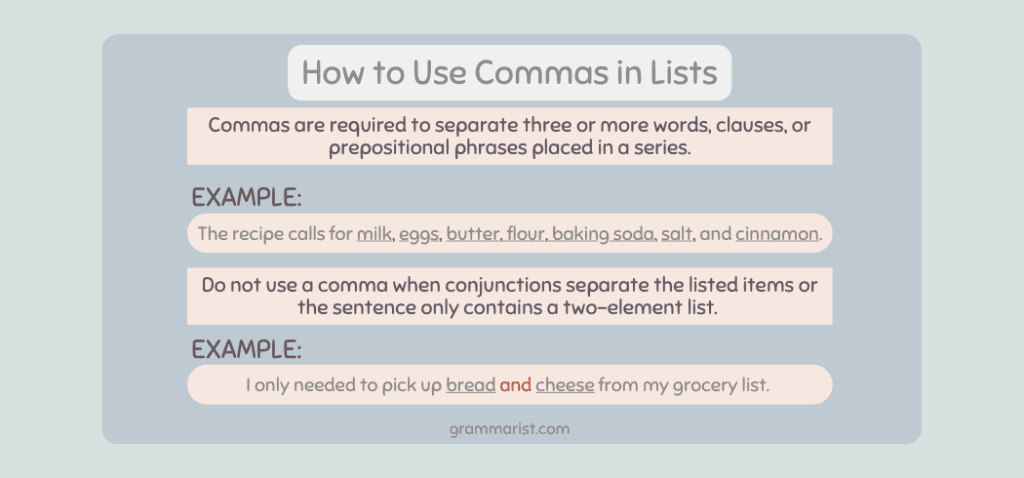Commas are a vital punctuation mark in the English language that help to clarify meaning, separate items in a list, and indicate pauses in a sentence. Understanding the rules of comma usage can greatly enhance your writing and improve clarity for the reader.
Here are five important rules to keep in mind when using commas in your writing:
1. Use commas to separate items in a list:
When listing three or more items in a sentence, use commas to separate them. For example: “I need to buy apples, oranges, and bananas at the store.” This helps to clearly distinguish each item in the list.
2. Use commas after introductory phrases:
Introductory phrases at the beginning of a sentence should be followed by a comma. For example: “After a long day at work, I like to relax with a good book.” This helps to signal the start of the main clause.
3. Use commas to set off non-essential information:
Non-essential information, such as additional details or clarifications, should be set off with commas. For example: “My sister, who lives in New York, is coming to visit next week.” This helps to separate the non-essential information from the main clause.
4. Use commas in compound sentences:
In compound sentences, use a comma before the coordinating conjunction (and, but, or) that joins the two independent clauses. For example: “I went to the store, and I bought some groceries.” This helps to show the relationship between the two clauses.
5. Use commas in direct address:
When directly addressing someone in a sentence, use commas to set off their name or title. For example: “John, can you pass me the salt?” This helps to clarify who is being addressed in the sentence.
By following these five rules of comma usage, you can improve the clarity and readability of your writing. Remember to always proofread your work to ensure proper comma placement and enhance the overall effectiveness of your writing.
